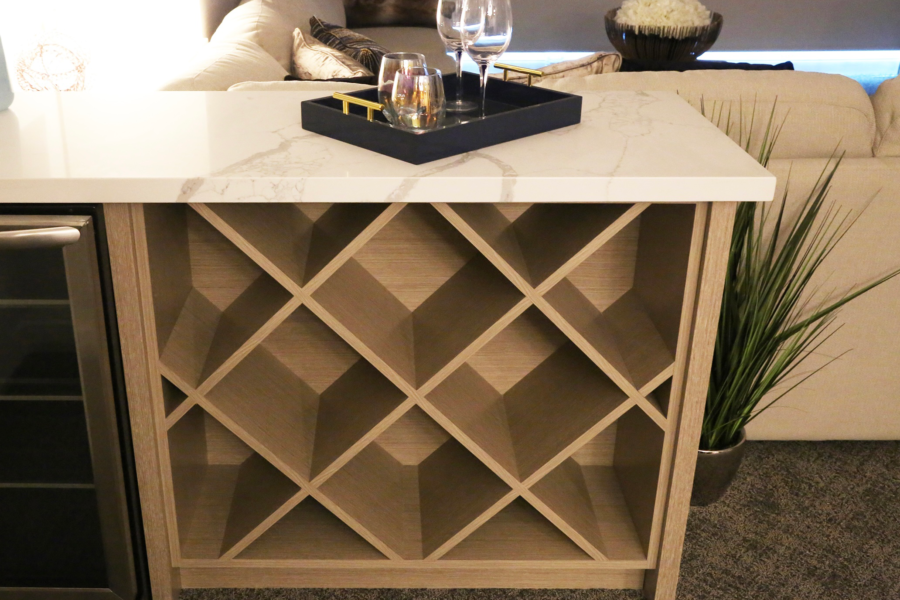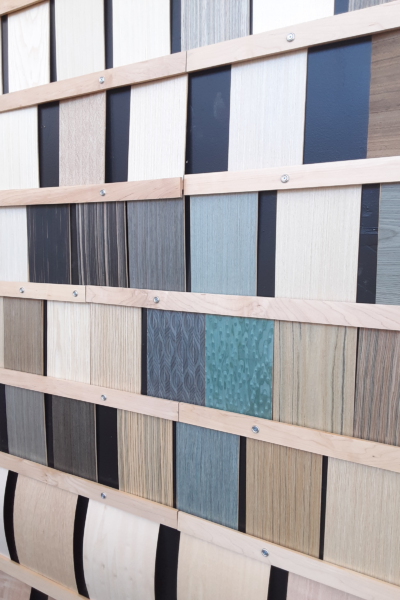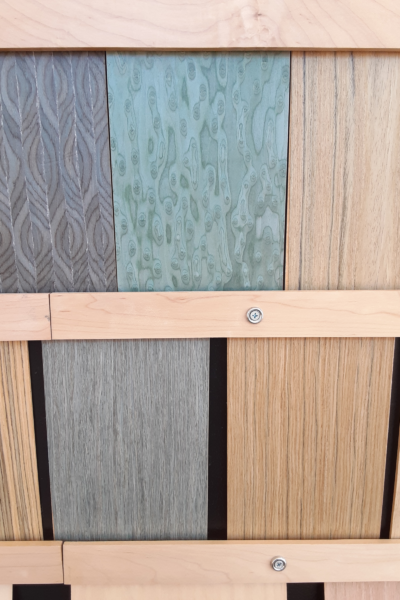2021 is at its halfway point, demand for lumber has exploded, and lumber prices have skyrocketed. Manufacturers and suppliers are playing catch-up for industry pros to have the wood material they need. Not only are we all struggling to get lumber at the best price, but we’re also waiting four to six weeks or even two to three months to receive it. Solid wood comes with its unique characteristics and beauty that naturally occurs, meaning it will always be a green building necessity. For those scrambling to get material that is organically beautiful, environmentally friendly, and affordable, consider reconstituted veneer.
Our team at Woodstock Architectural Products is constantly looking for ways to help our clients get the product they need while staying on budget. For example, general contractors are chasing down rift white oak for moulding, ceiling panels, flooring, and more. Rift white oak is an expensive lumber choice that at times is hard to find. When evaluating engineering, we look for an alternative material that is high quality, lower in price, and supports green building. With reconstituted veneers, you’re able to get the real wood appeal at a reduced price without compromising the project.
What is Reconstituted Veneer?

Wood veneer wine cabinet in the Hilton Elara supplied by Woodstock Architectural Products. Photo courtesy of Woodstock Architectural Products
Recomposed or man-made materials are one way to preserve natural resources needed for future generations. Reconstituted veneer is repurposed white hardwoods. Reconstituted veneer is thinly sliced from large, straight logs that have little to no defects. With any kind of veneer, there is no worry about knots, insect damage, ring shake, or seams. Every single sheet has a similar color and grain, making it perfect for architectural panels.
There are four major types of veneer; all are thinner than 1/8th of an inch but the technique and wood species used varies. Reconstituted veneer falls into the least expensive veneer choice, which is rotary cut. A rotary cut veneer is produced by spinning the log while layers of sheets are sliced from it. For added flexibility and strength there is backed veneer, placed onto plastic, foil, cloth, or MDF for a better-finished product. Exotic woods are widely available and used to create raw wood veneer cut directly from the exotic log. A laminate veneer is a durable layer of plastic, paper, or foil with a wood grain pattern printed on it.
While reconstituted veneer is a valuable resource for green living, it does involve a lengthy process. First the wood is sliced from the log, and then the sheets are dyed to get the desired wood grain color. Next the thin strips of wood are layered, glued, and stained to replicate a beautiful, natural wood grain. The veneer block is pressed and re-sliced into paper-thin sheets that are used for countless projects. The block is turned for different cuts that produce different looks such as plain with cathedrals, rift, or quartered.
How is Reconstituted Veneer Sustainable?
Rotary cut from fast-growing secondary wood species, reconstituted veneer involves an efficient process that produces very little waste. Common types of waste related to using solid lumber for millwork and building products are sawdust and scraps from milling the lumber to size. However, when a manufacturer has a veneer log, they use as much as they can from that single piece with none of the typical waste.
Logs for reconstituted veneers are sustainably sourced and maximized by using the best part of the log for numerous sheets. The unique appearance of the lumber is captured producing a stunning natural wood grain veneer. At Woodstock AP, we call that a “Remarkable Veneer!” It gives endless possibilities for building and design pros while also providing peace of mind. Contractors can complete a project with ease when choosing a reconstituted veneer because the wood grain is seemingly perfect while lowering costs.
- A “Wood of the Worlds” veneer wall displaying an assortment of wood veneer from around the globe. Photo courtesy of Woodstock Architectural Products
- There are countless wood veneer samples to easily match to your project. Photo courtesy of Woodstock Architectural Products
Why Reconstituted Veneer?
Let’s continue our rift white oak example from earlier. A general contractor or designer is set on having the look of rift white oak but is open to budget-saving alternatives. The contractor needs architectural panels, moulding, and doors in rift white oak. Our Remarkable Veneers line has a reconstituted veneer that is identical to natural rift white oak and defect-free, for a fraction of the cost of new lumber. Not to mention the veneer will look, feel, and smell like natural wood.
Not only are we helping preserve the environment by using reconstituted veneer but we’re also choosing a more durable material. When the veneer is placed onto MDF or substrate, it’s strengthening the thin sheet of wood and the finished product. Real wood moves—it can crack, warp, or swell over time due to moist conditions or extreme temperatures. Reconstituted veneer can withstand those types of conditions and remain strong and unmoved for years to come.
Reconstituted veneer is also ideal for large projects where the wood grain needs to be consistent throughout. Major commercial remodels have value-engineered with reconstituted veneer panels, cabinets, countertops, and more in a single space. This also makes it easy to match that specific color and grain if more material is needed later. Interior designers will choose reconstituted veneer when their client wants an exotic wood species look but doesn’t want to pay exotic prices.






